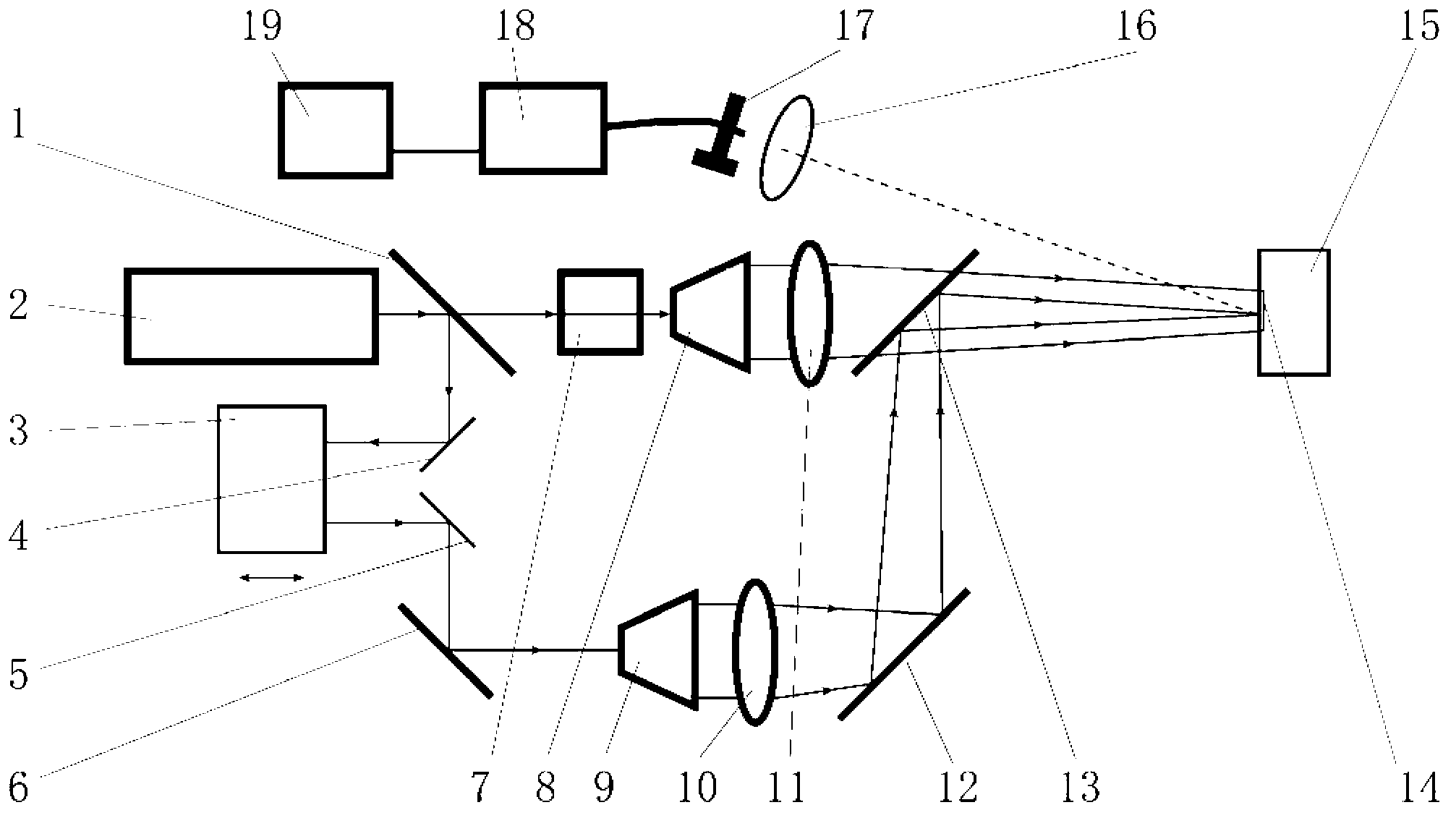Laser-induced breakdown spectroscopy (LIBS) detection system based on dual-pulse defocusing pre-ablation
A laser-induced breakdown and pulsed laser technology, which is applied in the field of laser spectrum detection, can solve the problems of affecting the detection accuracy of LIBS, reducing the signal-to-noise ratio of LIBS detection, and poor repeatability of LIBS spectral signals.
- Summary
- Abstract
- Description
- Claims
- Application Information
AI Technical Summary
Problems solved by technology
Method used
Image
Examples
Embodiment Construction
[0013] The principle of this patent is as figure 1 As shown, the solid-state pulsed laser 2 emits a nanosecond-level pulsed laser with a repetition rate of 10 Hz at a wavelength of 1064 nm, and is divided into two paths through a 3 to 7 ratio beam splitter 1:
[0014] The first path is the defocused light path. The defocusing optical path is composed of a frequency doubling crystal 7, a beam expander A8, and a focusing lens A11. The first pulse laser with 70% energy passing through the proportional beam splitter 1 is converted into a pulse laser with a wavelength of 532nm after passing through the frequency doubling crystal 7, expanding the beam through the beam expander A8, converging with the focusing lens A11, and passing through the dichroic mirror 13. On the sample target 15, the focal length of the focusing lens A11 is required to be greater than its distance to the sample target surface, that is, it is in a defocused state, and the sample target surface obtains a unifo...
PUM
 Login to View More
Login to View More Abstract
Description
Claims
Application Information
 Login to View More
Login to View More - R&D
- Intellectual Property
- Life Sciences
- Materials
- Tech Scout
- Unparalleled Data Quality
- Higher Quality Content
- 60% Fewer Hallucinations
Browse by: Latest US Patents, China's latest patents, Technical Efficacy Thesaurus, Application Domain, Technology Topic, Popular Technical Reports.
© 2025 PatSnap. All rights reserved.Legal|Privacy policy|Modern Slavery Act Transparency Statement|Sitemap|About US| Contact US: help@patsnap.com

